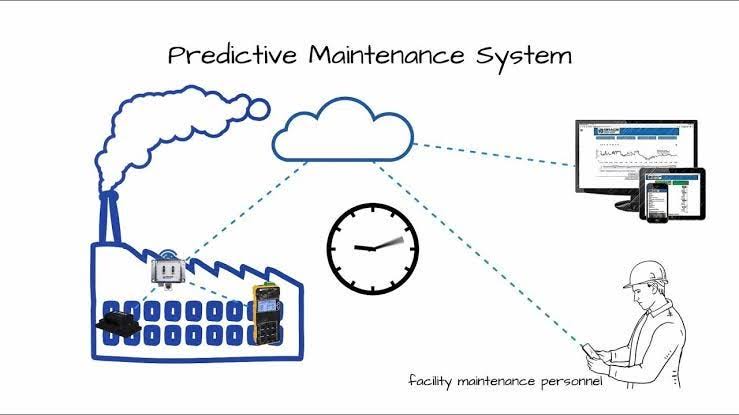In 2025, predictive maintenance is key for efficient operations in manufacturing, energy, transportation, and healthcare. Before, maintenance was done on fixed schedules or after equipment broke down. Now, machine learning helps predict problems early, reducing downtime, cutting costs, and making machines last longer.
Machine learning brings unmatched accuracy, adaptability, and automation to maintenance planning by analyzing massive volumes of real-time and historical data. The integration of ML allows systems to learn from patterns, detect anomalies, and make decisions with minimal human input. This shift from reactive to predictive strategy is revolutionizing the way organizations manage their physical infrastructure.
Understanding Predictive Maintenance
Predictive maintenance (PdM) refers to the process of monitoring the condition and performance of equipment during normal operation to reduce the likelihood of failure. Its goal is simple: fix machines just before they break—not too early, not too late.
The success of PdM depends on the ability to accurately predict when a failure is likely to occur. This is where traditional techniques often fell short. However, ML bridges the gap between prediction and precision by using data-driven models that evolve over time.
Role of Machine Learning in Predictive Maintenance
Machine learning enhances predictive maintenance systems through its ability to handle complex, non-linear relationships in data. It works by training algorithms on large sets of sensor, usage, and environmental data to recognize patterns associated with machine degradation and impending failure.
Key ways ML contributes to predictive maintenance include:
1. Anomaly Detection
ML models can learn what “normal” behavior looks like for specific equipment and immediately flag deviations that indicate potential problems. Unlike rule-based systems that rely on static thresholds, ML continually updates its understanding based on new data.
Examples:
- Vibration sensors detecting early bearing wear
- Unusual temperature fluctuations in electrical panels
- Pressure anomalies in hydraulic systems
2. Remaining Useful Life (RUL) Estimation
RUL prediction is one of the most valuable applications of ML in maintenance. Models like regression algorithms, recurrent neural networks (RNNs), and long short-term memory (LSTM) networks are used to estimate how long a component will last before failure.
This insight allows maintenance teams to schedule interventions just in time—preventing both catastrophic breakdowns and unnecessary replacements.
3. Fault Classification
Machine learning classifiers can be trained to identify different types of faults based on signature patterns in the data. Instead of simply indicating a problem, the system can specify whether it’s a motor issue, lubrication problem, or alignment defect.
This speeds up diagnosis and repair, ensuring the right personnel and parts are deployed immediately.
4. Automated Root Cause Analysis
Advanced ML techniques like decision trees and Bayesian networks can trace the underlying cause of repeated faults by analyzing historical failure data. This reduces guesswork and allows engineers to make informed improvements to design or usage.
Benefits of Using Machine Learning for Predictive Maintenance
As of 2025, organizations that leverage machine learning for predictive maintenance report significant advantages:
- Reduced Downtime: Machines are fixed before they fail, keeping production lines moving.
- Lower Maintenance Costs: Resources are allocated only when necessary, reducing routine checks and emergency interventions.
- Extended Equipment Lifespan: Components are used closer to their actual limits without risking damage.
- Improved Safety: Early detection of dangerous faults protects both operators and assets.
- Data-Driven Decision Making: Maintenance strategies are guided by real performance metrics rather than guesswork or rigid schedules.
These benefits contribute directly to higher productivity, increased profit margins, and more sustainable operations.
Real-World Applications Across Industries
Machine learning-driven predictive maintenance is being adopted across a variety of sectors:
- Manufacturing: Factories use ML to monitor CNC machines, conveyors, and robotics to avoid costly stoppages.
- Aviation: Airlines analyze engine performance data to predict part fatigue and optimize aircraft maintenance schedules.
- Transportation: Fleet managers track vehicle telematics for tire wear, brake health, and engine issues before they escalate.
- Energy: Power plants and wind farms use ML to monitor turbines and generators, reducing blackouts and repair delays.
- Healthcare: Hospitals apply PdM to critical devices like MRI machines and ventilators to ensure reliability during emergencies.
These industries benefit not just from fewer breakdowns but from a deeper understanding of their assets’ behavior under different conditions.
Key Machine Learning Algorithms Used
Several ML models are particularly suited to predictive maintenance:
- Support Vector Machines (SVMs): Effective in classifying different types of machine faults.
- Random Forests: Handle large, noisy datasets well and offer interpretability.
- Gradient Boosting Machines (GBMs): Great for handling imbalanced datasets common in maintenance (few failures, many normal readings).
- Neural Networks: Particularly LSTMs, which are ideal for time-series data from sensors.
- K-Means Clustering: Used for anomaly detection when labeled data isn’t available.
The choice of algorithm depends on the nature of the equipment, the availability of labeled failure data, and the complexity of the task.
Challenges and Considerations
Despite the power of machine learning in predictive maintenance, certain challenges remain:
- Data Quality: ML models are only as good as the data they’re trained on. Sensor errors or missing data can reduce accuracy.
- Implementation Cost: Installing IoT sensors and setting up data infrastructure requires upfront investment.
- Model Interpretability: Some advanced models (like deep learning) can be difficult to interpret, making decisions harder to justify.
- Integration with Legacy Systems: Many organizations still operate on older platforms that don’t natively support advanced analytics.
However, as technologies like edge computing, 5G connectivity, and cloud AI services become mainstream in 2025, these challenges are being steadily overcome.
Future Outlook
Machine learning is expected to play an even more central role in predictive maintenance going forward. Emerging trends include:
- Self-healing systems that not only detect issues but initiate corrective actions autonomously.
- Federated learning models that learn across multiple machines without compromising data privacy.
- Digital twins, where ML enhances virtual replicas of assets to simulate future failure scenarios and optimize interventions.
In short, predictive maintenance is evolving into prescriptive maintenance—where ML doesn’t just predict failure but suggests the best corrective action, timing, and method.
Final Thoughts
Machine learning has redefined what’s possible in asset management. From reducing costly breakdowns to enabling smart, efficient repair strategies, ML-powered predictive maintenance offers a data-driven approach to keeping systems healthy and operational.
As industries become more reliant on automation and real-time intelligence, embracing machine learning for predictive maintenance isn’t just an advantage—it’s becoming essential for survival and growth in the digital era.



